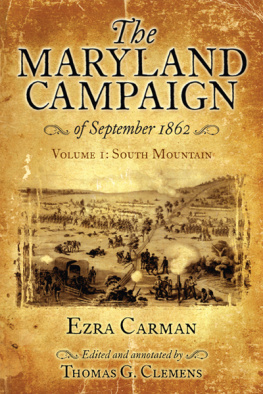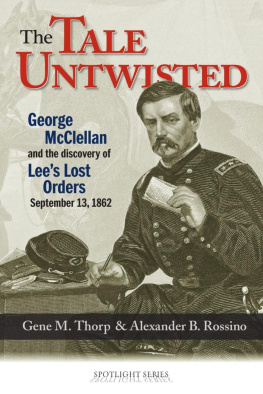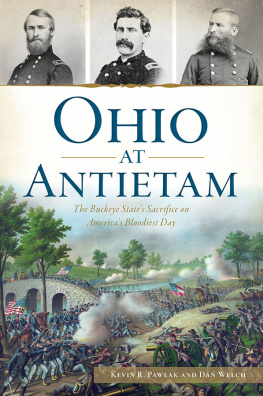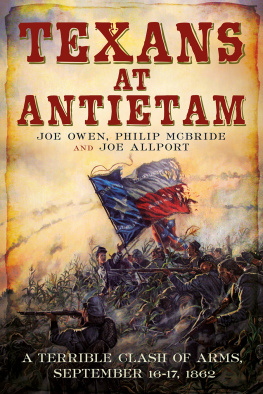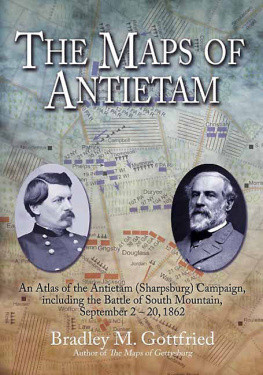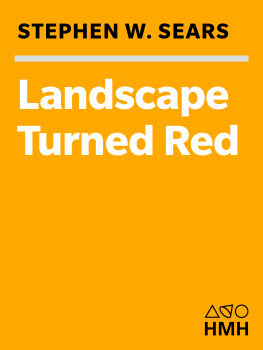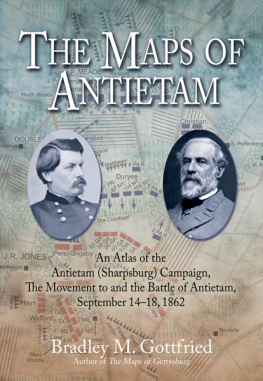

2010 by Thomas G. Clemens
All rights reserved. No part of this publication may be reproduced, stored in a retrieval system, or transmitted, in any form or by any means, electronic, mechanical, photocopying, recording, or otherwise, without the prior written permission of the publisher. Printed in the United States of America.
Cataloging-in-Publication Data is available from the Library of Congress.
ISBN 978-1-932714-81-4
05 04 03 02 01 5 4 3 2 1
First edition, first printing

Published by
Savas Beatie LLC
521 Fifth Avenue, Suite 1700
New York, NY 10175
Editorial Offices:
Savas Beatie LLC
P.O. Box 4527
El Dorado Hills, CA 95762
Phone: 916-941-6896
(E-mail) editorial@savasbeatie.com
Savas Beatie titles are available at special discounts for bulk purchases in the United States by corporations, institutions, and other organizations. For more details, please contact Special Sales, P.O. Box 4527, El Dorado Hills, CA 95762, or you may e-mail us at sales@savasbeatie.com, or visit our website at www.savasbeatie.com for additional information.
To Ezra Ayres Carman, a soldier and historian who in the tradition of Thuycidides became an objective chronicler of his own war.
Also to those brave men North and South who, as the Maryland monument so aptly states, offered their lives in maintenance of their principles.
May God bless them all.

This A.R. Waud woodcut is taken from the Oct. 25, 1862 issue of Harpers Weekly and depicts a fanciful version of the Union attack at Cramptons Gap being met with a strong Confederate defensive line. Harpers Weekly
Foreword
Ezra Carman, a veteran of the battle and a member of the Antietam Battlefield Board, spent most of the 1890s composing The Maryland Campaign of 1862, wrote historian Joseph Harsh in the introduction to his seminal work Taken at the Flood: Robert E. Lee and Confederate Strategy in the Maryland Campaign of 1862. His history is perhaps the best study produced by any participant of the war. Dr. Harsh went on to write that Carmans 1, 800-page manuscript is an invaluable source of anecdotes and insights that historians have barely begun to utilize.
Indeed, Carmans work is the bible on Antietam and one of the most detailed studies of any major Civil War campaign. Carman was both a participant in the Battle of Antietam and its principal scholar. He spent a lifetime studying Americas bloodiest day, starting immediately after the battle by interviewing wounded soldiers in field hospitals from both sides, as well as local civilians. Carmans work has often been compared to that of John Bachelder. Like Carman, Bachelder also devoted much of his life to studying one battle (Gettysburg) and interviewing hundreds of participants. Unlike Carman, however, Bachelder never saw combat during the Civil War (and did not witness Gettysburg like Carman witnessed Antietam). In addition, modern scholars have questioned some of Bachelders information and conclusions, particularly regarding troop positions at Gettysburg.
Scholarly use of Carmans work has been an evolutionary process. While Gettysburg scholars have had ready access to the Bachelder papers for years, Carmans papers remain scattered between five major repositories, with individual letters popping up frequently in other holdings. The late James Murfin listed the Carman manuscript in the bibliography of his groundbreaking study The Gleam of Bayonets: The Battle of Antietam and Robert E. Lees Maryland Campaign, September 1862. A close perusal of his endnotes, though, reveals very few actual citations to that work. And then along came Stephen W. Sears with his critically acclaimed book Landscape Turned Red: The Battle of Antietam. Sears took the Carman research a bit further by referring to the several collections in the National Archives, the Carman letters at Dartmouth, and the manuscript housed at the Library of Congress.
Other historians have followed suit by tapping the rich holdings of Carmans papers. Popular author John Michael Priest utilized both the Carman manuscript at the Library of Congress and the so-called Antietam Studies at the National Archives for his books on the battles of South Mountain and Antietam. To date, the most extensive use of the Carman collections has been the three-volume study by the aforementioned Joseph Harsh. In 2008, Joseph Pierro, one of Harshs graduate students at George Mason University, edited the Carman manuscript for Routledge Press. Pierro did a credible job providing annotated footnotes that both corrected errors in the text and explained more about events and individuals mentioned in the narrative.
Enter Thomas Clemensa professor of history at Hagerstown Community College, a lifetime student of the Civil War and the Battle of Antietam, and another graduate student of Professor Harsh. Besides his classroom duties, Tom has spent more than three decades as a volunteer at Antietam National Battlefield. Here, he has done everything from delivering lectures to giving costumed interpretive talks on artillery, assisting in the park library, and working weekends with fellow preservationists to clear brush on the battlefield. Tom is also a founder and current President of SHAF: Save Historic Antietam Foundation. With his depth of knowledge and total immersion into the subject for the past decades, Tom could easily carry the nickname Mr. Antietam.
Tom has spent many long years poring over both the Carman manuscript and related letters from other holdings to provide Civil War students with the most up-to-date version of Carmans Maryland Campaign story. With the Savas Beatie publication of The Maryland Campaign of September 1862 , we have the convergence of two experts. Ezra Carman, the leading authority on the Maryland Campaign and Antietam, and Tom Clemens, who is easily this countrys foremost authority on Ezra Carman.
The past few decades have witnessed the publication of thousands of books on the Civil War. Only a slim handful stands the test of time. I can confidently conclude that Tom Clemens editing of the Carman manuscript will remain one of the most important of the genre ever to be published.
Ted Alexander
Historian, Antietam National Battlefield
Ezra Carman and the Maryland Campaign of 1862
Ezra Ayres Carman, a Civil War veteran and self-taught historian, produced the most detailed and accurate narrative study of the Antietam Campaign. His work has guided all subsequent studies of the Maryland operations, provides the most accurate maps of the troop movements in the battle, and is still the basis for the current interpretive plan of Antietam National Battlefield. Although several treatments of Carmans manuscript have been circulated recently, none have sought to deconstruct his effort. Like any work of history, Carmans manuscript is only as good as his sources. One of the primary intents of this book is to discover, as far as possible, the sources Carman relied upon, how they influenced his writing, and the soundness of his conclusions.
The Antietam Battlefield Board, which Carman headed for many years, received nearly 2,000 letters from veterans of the campaign. Carmans friend and fellow historian John M. Gould of Maine gave him access to the more than 1,000 additional letters Gould received in his quest to resolve the controversy surrounding General Joseph Mansfields death of September 17 at Antietam. Add to this wealth of information the published Official Records of the Union and Confederate Armies in the War of the Rebellion , articles by various commanders in the Battles and Leaders series that appeared in Century Magazine , and the memoirs and regimental histories that appeared before his death, and it is clear that Carman had access to a staggering amount of firsthand material. While I have not been completely successful in discovering every source Carman utilized, I have been able to identify and evaluate most of them and, by doing so, arrived at a much deeper understanding of why Carman wrote what he did. Before discussing the strengths and weaknesses of Carmans work, it is appropriate to discuss the man himself, and how he came to write this fascinating and vital document.
Next page
